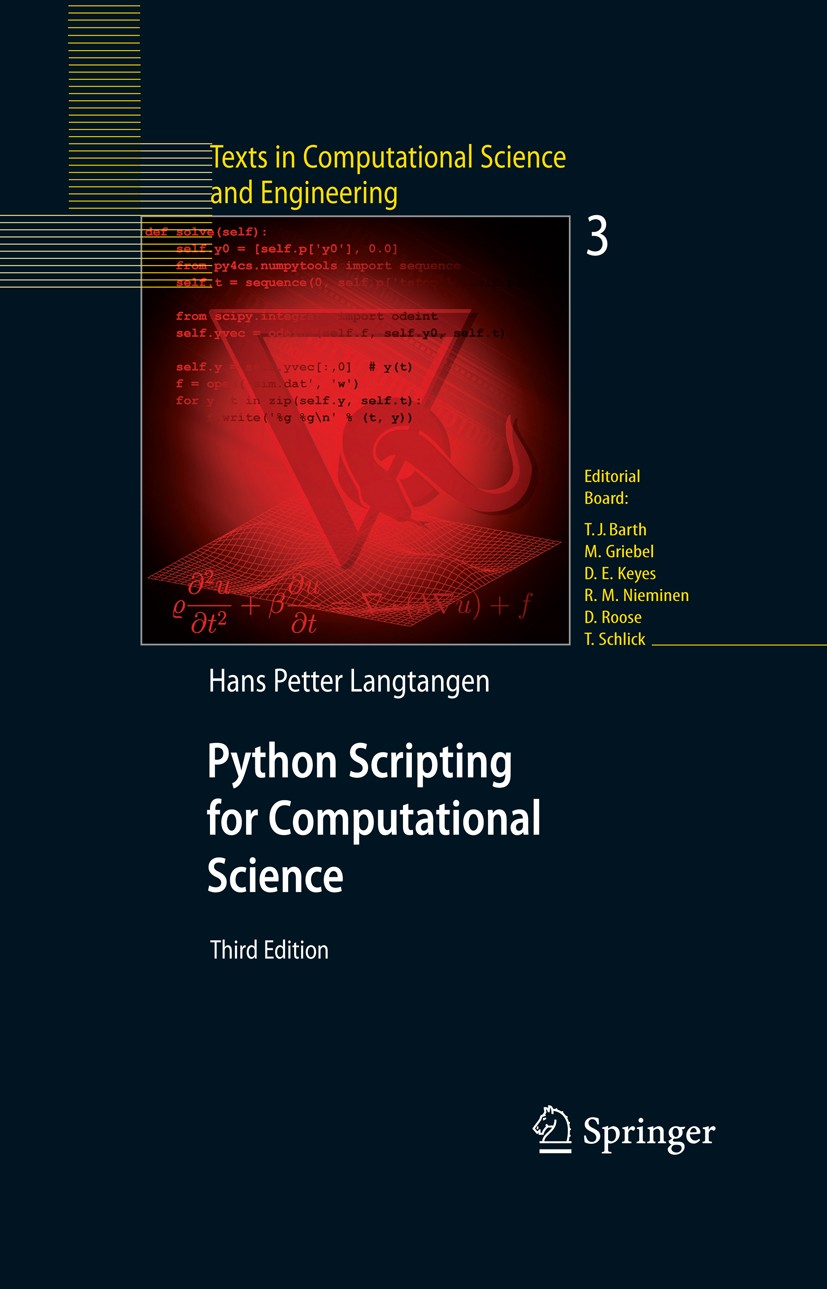| 书目名称 | Python Scripting for Computational Science |
| 编辑 | Hans Petter Langtangen |
| 视频video | http://file.papertrans.cn/765/764235/764235.mp4 |
| 概述 | Shows how to develop tailored, flexible, and human-efficient working environments using the easy-to-learn, high-level Python language.Focuses on examples and applications of practical use to computati |
| 丛书名称 | Texts in Computational Science and Engineering |
| 图书封面 |  |
| 描述 | Numerous readers of the second edition have noti?ed me about misprints and possible improvements of the text and the associated computer codes. The resulting modi?cations have been incorporated in this new edition and its accompanying software. The major change between the second and third editions, however, is caused by the new implementation of Numerical Python, now called numpy. The new numpy package encourages a slightly di?erent syntax compared to the old Numeric implementation, which was used in the previous editions. Since Numerical Python functionality appears in a lot of places in the book, there are hence a huge number of updates to the new suggested numpy syntax, especially in Chapters 4, 9, and 10. The second edition was based on Python version 2.3, while the third edition contains updates for version 2.5. Recent Python features, such as generator expressions (Chapter 8.9.4), Ctypes for interfacing shared libraries in C (Chapter 5.2.2), the with statement (Chapter 3.1.4), and the subprocess module for running external processes (Chapter 3.1.3) have been exempli?ed to make the reader aware of new tools. Chapter 4.4.4 is new and gives a taste of symbolic mathematics in Py |
| 出版日期 | Textbook 2008Latest edition |
| 关键词 | C programming language; C++ programming; C++ programming language; C/C++; FORTRAN; Open Source; Python; Win |
| 版次 | 3 |
| doi | https://doi.org/10.1007/978-3-540-73916-6 |
| isbn_softcover | 978-3-642-09315-9 |
| isbn_ebook | 978-3-540-73916-6Series ISSN 1611-0994 Series E-ISSN 2197-179X |
| issn_series | 1611-0994 |
| copyright | Springer-Verlag Berlin Heidelberg 2008 |
 |Archiver|手机版|小黑屋|
派博传思国际
( 京公网安备110108008328)
GMT+8, 2025-11-22 12:28
|Archiver|手机版|小黑屋|
派博传思国际
( 京公网安备110108008328)
GMT+8, 2025-11-22 12:28


